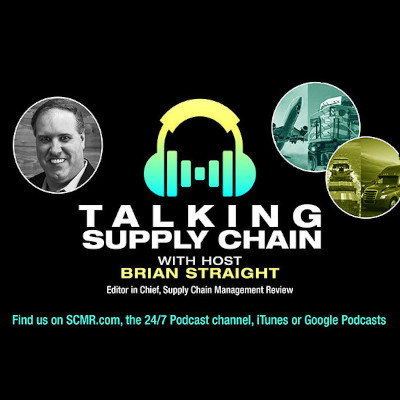Editor’s note: Procurement Pulse is a monthly look at a topic or trend that is impacting the procurement function at organizations of all sizes. This month, we look at managing costs. If you are interested in future topics, you can see a full list of upcoming features on our Editorial Calendar.
Procurement professionals have two primary job functions: secure materials and accomplish that task in the most cost-efficient manner possible.
A recent survey from Boston Consulting Group found that 65% of executives are prioritizing supply chain and manufacturing costs as the biggest levels for organizations to pull for cost savings. This trumps traditional cost-reduction areas such as labor and nonlabor overhead costs (cited by 52%). The Hackett Group’s 2024 Procurement Key Issues research found that the top issue for procurement professionals this year is cost reduction.
That is not a surprise to M. Todd Abner, founder, president and CEO of OMNIA Partners, a group purchasing organization.
“Price is typically the biggest obstacle procurement leaders face. Currently, the inflationary environment—which drives up the price per unit on commodities—and limited budgets are making this especially challenging,” Abner tells Supply Chain Management Review.
Tech can help
Abner notes that emerging technology platforms are making time- and resource-intensive tasks easier, and that is helping CPOs better analyze spending.
“Notably, taking advantage of this doesn’t have to be cost-prohibitive—some platforms are free through GPOs,” he says. “As a result, CPOs are able to make their limited budgets go further and spend more time and resources on growing their organizations and expanding their impact.”
Even with technology, though, CPOs are facing headwinds in terms of geopolitical challenges, supplier diversity requirements, and climate impacts to name a few. Abner says data helps address some of these challenges.
“Domestic financial policy has a significant impact on procurement. Consider the current economic environment: budgets are not increasing, but product prices are rising, and supply chain challenges remain,” he says. “Without data that assess how and where they are spending and saving, CPOs may be inclined to buy less—finding themselves unable to fulfill their organizations’ needs—due to pressures to cut costs. Clear, comprehensive insights into spending can help CPOs avoid this pitfall, allowing them to realize the benefits of incremental value and mitigate the impacts of supply chain challenges.”
Looking through a strategic lens
As the challenge to control costs bumps against the prevailing headwinds CPOs need to make smart decisions. Technology is just one avenue to explore, Abner says.
“While investing in artificial intelligence and other technologies can create efficiencies that benefit their organizations, CPOs should assess opportunities to reduce spending across the board, including at the commodity level (e.g., office supplies),” he notes.
It is often these so-called “dark purchases” that add up for firms.
A Globality report from earlier in 2023 noted that eight of 10 requests for proposals were still taking place via email and spreadsheets. The report, 2023 Research Insights for CFOs, found that 82% of procurement leaders acknowledge their indirect spend is not well managed and that cost savings is being left behind as a result.
A lack of technology and as a result, visibility, into the procurement process in addition to decentralized processes hamper the ability to manage spend. But there are also conscious decisions that some organizations make surrounding procurement that leads to dark purchases, which are usually defined as “any purchases that are outside your defined procurement” process, explains B5Digital. “Such purchases can affect your ability to manage cash flow,” the firm added.
“Spending on commodities can add up, and when not done strategically, money is often left on the table,” Abner says.
Managing in the dark
Abner says organizations don’t need to manage in the dark. An example of this is when it comes to ethical sourcing. Group purchasing organizations can help collect data and track reporting in this area.
“This information can help CPOs make strategic purchasing decisions while meeting any ethical spending requirements they may have,” he says.
The other area that troubles organizations are those that may not have a dedicated procurement officer to monitor spending. Abner says those companies can utilize “cutting-edge, e-commerce technology can provide critical insights needed to maximize resources.
“This levels the playing field in ways never seen before, so regardless of whether an organization has a CPO, data-driven insights can give a company access to insights to inform purchasing decisions,” he notes.
A CPO remains a critical position within an organization. However, if they don’t have access to the right data, the results will be lacking.
“Buyers may not have a holistic view of their spending and, as a result, procurement is likely to become task-oriented,” Abner says. “The right technology can help buyers avoid this and take on a strategic perspective that drives value.”
SC
MR


More Procurement Strategy
- What is the future of procurement?
- The disconnect between procurement budgets and efficiency
- Gartner identifies top constraints, solutions to long-term success
- Keynotes from Procter & Gamble, Johnson & Johnson & Whirlpool execs highlight NextGen conference agenda
- Managing procurement in a price-sensitive environment
- More Procurement Strategy
What's Related in Procurement Strategy

 Explore
Explore
Topics
Procurement & Sourcing News
- Retail sales see gains in October, reports Commerce and NRF
- Geopolitical readiness in supply chains: Strategic challenges for leaders
- With capacity to spare, logistics real estate demand remains subdued
- Tariffs, taxes and trade: The impact of Trump’s reelection on the supply chain
- How to improve demand forecasts for new product families
- Aggregators sitting on the throne of Africa’s e-commerce supply chains: What lessons can we learn?
- More Procurement & Sourcing
Latest Procurement & Sourcing Resources

Subscribe

Supply Chain Management Review delivers the best industry content.

Editors’ Picks





